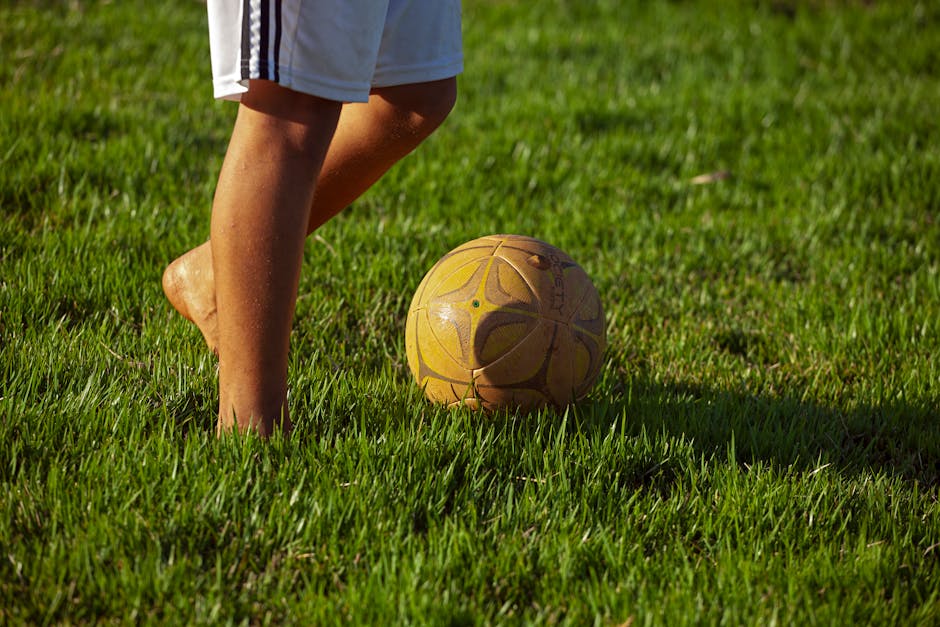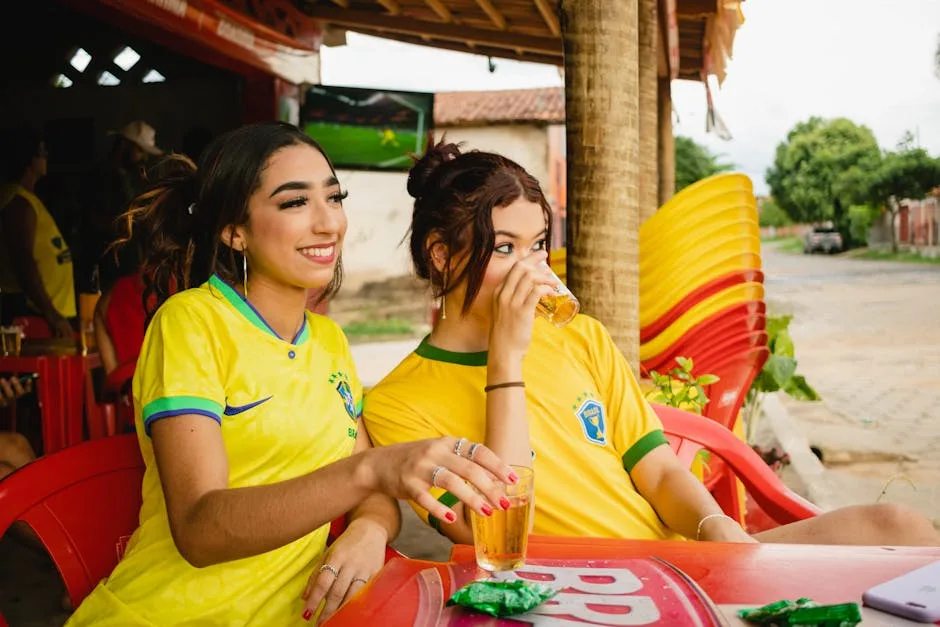- The Rhythm of the Beautiful Game: More Than Just a Sport
- The Soul of the Streets: Life in the Pelada
- Futsal: The Technical Laboratory
- The Heavy Ball and the Pisada
- The Small Space Demands Big Brains
- Ginga and Malandragem: The Cultural DNA of the Dribble
- From the Court to the World Stage: The Legends
- The Social Glue of the Community
- The Enduring Spirit of the Streets
The Rhythm of the Beautiful Game: More Than Just a Sport
Ever watch a brazilian player on the world stage and just marvel? That effortless control, the samba-like rhythm in their dribble, the audacious flick that seems to come from nowhere. It’s a style of play that’s more art than athletics—a joyful, expressive dance with the ball. We call it joga bonito, the beautiful game. But have you ever stopped to wonder where that magic really comes from? It isn’t just born on the immaculate, sprawling pitches of professional academies. Its true cradle lies somewhere much rawer, much more chaotic, and infinitely more creative: the streets, courts, and dusty lots of brazil.
The secret to Brazil’s footballing soul is a powerful one-two punch: the unbridled freedom of street soccer, known as pelada, and the technical pressure-cooker of futsal. These two forms of the game are the true architects of Brazilian flair, forging players who are not just athletes, but problem-solvers, entertainers, and masters of improvisation. Let’s take a walk through the bustling back alleys and echoing sports courts to understand how these environments create footballing genius.
The Soul of the Streets: Life in the Pelada
Before there were uniforms, coaches, or even proper goals, there was pelada. The word literally means “naked” or “bare,” which perfectly captures its essence: football stripped down to its core. A pelada can happen anywhere, at any time. All you need is a ball (or something that resembles one—a bundle of socks, a plastic bottle) and a patch of ground.
Picture this: a narrow, cobblestoned street in a favela, with flip-flops marking the goals. A sun-baked, uneven dirt field where a cloud of dust follows every move. A stretch of sand on the beach as the tide goes out. This is the stadium for a pelada. There are no set number of players; teams are formed on the spot. The rules are fluid, often decided by a quick shout and a nod. It’s beautifully chaotic.
This environment is a crucible for skill development:
- Improvisation is King: The unpredictable bounce of the ball on an uneven surface means you can’t rely on textbook technique. You have to adapt, to react in a split second. This is where the no-look pass and the inventive flick are born—not as showboating, but as necessary solutions to a tricky situation.
- Close Control is Survival: With tight spaces and a swarm of opponents, you have to keep the ball on a string. There’s no room for a heavy touch. Players learn an intimate, almost telepathic connection with the ball, mastering the art of shielding it and maneuvering through a forest of legs.
- Physicality and Agility: Playing against bigger, older players is common. You learn quickly that you can’t win with brute force. Instead, you develop a low center of gravity, quick changes of direction, and the agility to ride challenges and stay on your feet.

Futsal: The Technical Laboratory
If pelada is the wild, free-flowing soul of Brazilian football, futsal is its technical brain. Played on a hard court, typically indoors, with five players per side, futsal acts as a natural bridge between the chaos of the street and the organized 11-a-side game. Many, if not most, of Brazil’s greatest legends cut their teeth on the futsal court.
The unique characteristics of futsal are what make it such an incredible development tool. It’s not just small-sided soccer; it’s a different beast entirely.
The Heavy Ball and the Pisada
The most significant element of futsal is the ball. It’s smaller and heavier than a regular soccer ball, with about 30% less bounce. This simple change has a profound impact. A bouncing ball is an uncontrolled ball. The low-bounce futsal ball encourages players to keep it on the ground, glued to their feet. It forces them to master the pisada—the technique of stopping and controlling the ball with the sole of the foot. This single skill is the foundation of the Brazilian dribble, allowing for quick stops, explosive changes of direction, and incredible close control while shielding from defenders.
The Small Space Demands Big Brains
The tight confines of the futsal court are a mental workout. There is no time to dwell on the ball. You receive it, and immediately there are one or two opponents on you. This pressure cooker environment hones several key abilities:
- Quick Thinking: Decisions must be made in a fraction of a second. Players develop an instinctual understanding of space, movement, and passing angles.
- One-Touch Passing: The fastest way to beat pressure is to move the ball quickly. Futsal drills the importance of triangles, give-and-gos, and rapid ball circulation into a player’s DNA.
- Creativity in Tight Corners: When you’re trapped near the sideline with two defenders closing in, what do you do? A futsal player has a whole library of feints, drag-backs, and clever turns to escape. This is where the magic happens.
Ginga and Malandragem: The Cultural DNA of the Dribble
You can’t talk about Brazilian dribbling without understanding two crucial cultural concepts: ginga and malandragem.
Ginga is the sway, the rhythm. It’s a word with deep roots in the Afro-Brazilian martial art of capoeira, describing the constant, fluid back-and-forth movement that serves as the base for all attacks and evasions. In football, ginga is the body feint, the shoulder drop, the rhythmic rocking motion a player uses to unbalance a defender before exploding past them. It’s a philosophy of movement that turns a simple dribble into a dance.
Malandragem is a bit more complex. It translates roughly to “cunning” or “street smarts.” It’s the art of the hustle, of using wit and trickery to gain an advantage. In football, this isn’t about cheating; it’s about deception. It’s the cheeky nutmeg, the look one way and pass the other, the subtle feint that sends a defender the wrong way. It’s the intelligence forged in peladas where you had to be smarter to beat players who were bigger and stronger.
From the Court to the World Stage: The Legends
The list of Brazilian superstars whose games were sculpted by futsal and street ball is a who’s who of footballing royalty.
Ronaldinho is perhaps the ultimate embodiment of this culture. Every touch he made was infused with joy and unpredictability. His signature moves, like the elástico (flip-flap), were perfected on the futsal court where such quick footwork was essential. He played with a smile because, for him, a World Cup final was just a bigger version of the pelada he played as a kid in Porto Alegre.
Neymar Jr. is a modern futsal product. His incredible balance, rapid-fire step-overs, and ability to manipulate the ball in impossibly tight spaces are all hallmarks of a futsal upbringing. He plays as if the ball is an extension of his body, a direct result of countless hours with the heavy ball at his feet.
Even older legends like Zico, Rivelino, and the phenomenal striker Ronaldo Nazário credit futsal for their incredible technique. Ronaldo’s famous toe-poke finishes were a direct adaptation of a futsal shooting technique, used to get a shot off quickly before a defender could block it.

The Social Glue of the Community
Beyond creating world-class athletes, pelada and futsal are the social fabric of many Brazilian communities. They are a democratic space where a kid from a wealthy neighborhood and a kid from a favela can share the same pitch, and the only thing that matters is your skill with the ball. It’s a source of identity, pride, and, most importantly, joy.
These games are an escape, a creative outlet, and a classroom for life lessons. They teach resilience—getting knocked down on a hard court and getting right back up. They teach camaraderie and communication, even without a coach orchestrating things. They reinforce the idea that the process, the act of playing and expressing oneself, is just as important as the final score.
The Enduring Spirit of the Streets
In today’s world of hyper-organized youth academies and structured training, some worry that the spontaneous magic of street football is fading. Urbanization has swallowed up many of the old dirt pitches, and safety concerns keep more kids indoors. However, the spirit of the streets is too deeply woven into the fabric of Brazilian football to ever truly disappear.
Futsal has become an official, vital part of youth development for every major club in Brazil, ensuring that the next generation still learns the essential lessons of close control and quick thinking. And deep in the communities, on any given afternoon, you can still hear the familiar sounds: the thump of a ball against a wall, the shouts of a makeshift game, and the laughter of players trying a new trick. The stage may be smaller, but the dance continues. The beautiful game’s most authentic, creative, and joyful roots are still there, nurturing the flair of tomorrow.




